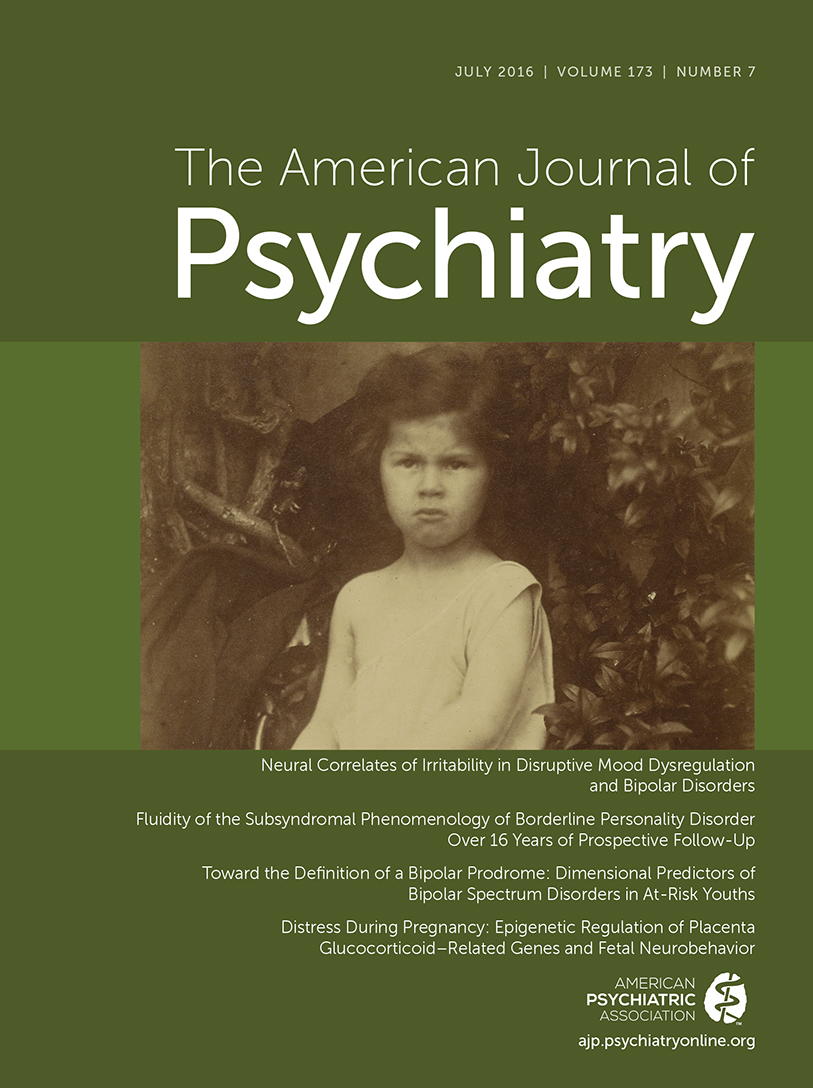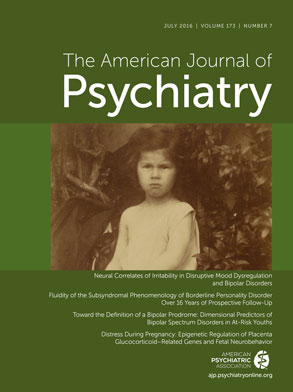Good afternoon.
It is a pleasure to have the opportunity to welcome you to the Annual APA meeting.
I am honored and thrilled to have the privilege to serve this wonderful organization and its membership, as well as the field of psychiatry. In the coming year, my goal is to work toward an overarching theme, which I find not only timely, but very exciting.
For most of the history of medicine, physicians have been focused on the treatment of human ailments: communicable and noncommunicable illnesses that impaired function or induced pain or both. Sadly, often, even the best interventions could only serve as palliation for human suffering.
However, in the last two decades, since the beginning of the 21st century, medicine has been moving at an accelerated pace toward focusing on prevention. The concept is to identify those at risk, before any symptoms emerge, through the use of genetic and other molecular markers. For psychiatry, this of course is a very exciting prospect, but one that seems quite out of reach at the moment.
I propose to you that we need not wait that long. We can engage in prevention today not only in medicine, but in psychiatry. You might ask yourself: How could we possibly prevent schizophrenia? How could we possibly prevent major depression? How could we possibly prevent posttraumatic stress disorder?
I submit to you that not only can we work toward prevention, but that the best way to do so will be through partnerships. It is for this reason that the theme of my presidential year will be “Prevention through Partnerships.” In thinking about the many ways that the APA makes a difference for our members and our patients every single day, it seems to me that we can also leverage our membership and leadership to develop partnerships with other disciplines in medicine and with the community. Let me give you some examples. Perhaps the most accessible partnership, an impending one even, is with primary care, be it family medicine or internal medicine. Indeed, integrated care presents wonderful opportunities for prevention through just this type of partnership. For example, one of the salient models for integrated care proposes that the psychiatrist be embedded in the primary care setting, working closely with physicians, nurse practitioners, physician assistants, and case workers. The notion is that the psychiatrist would oversee the care of all the patients in that practice or setting. Straightforward, bread and butter cases of depression or anxiety would receive their treatment from the nurse practitioner or physician assistant under the supervision of the psychiatrist, reserving the psychiatrist’s direct care for the more complex or treatment-refractory cases. Interestingly, implied in this model is that the number of individuals requiring psychiatric assistance in an ordinary medical practice is simply too large for one person to care for. Rather, an entire team would be needed to address the mental health needs of the population under that practice’s care. Now, of course, this model is intended to identify individuals suffering from mental illness. But there is no reason why care could not be extended to those who have subthreshold symptoms. Enter the concept of wellness. Now, with the availability of evidence-based psychosocial interventions that are brief and cost-effective, we have the opportunity to relieve the suffering of those who struggle with anxiety or depressive symptoms but do not yet meet criteria for the disorder or those who acknowledge too much alcohol use but are not yet addicted. A case worker trained to teach breathing exercises or mindfulness could significantly alleviate suffering for an anxious individual. A physician assistant who can conduct interventions such as interpersonal counseling or behavioral activation can provide relief to the patient with subthreshold depressive symptoms. A social worker who can engage that patient who is drinking too much to reduce his intake, using motivational interviewing, might well avert the development of more problematic behaviors. Lessons from the global mental health world, where these types of interventions are routinely delivered by community health workers for individuals with-full blown disorders, reveal two things: one is that we can make a difference in people’s lives not only once their condition is fully syndromic, but suggest that we can help even when they are suffering below the threshold for a diagnosis; the other is that para-professionals with appropriate training and supervision can deliver these psychosocial interventions, and do so effectively.
Similarly, partnerships with our colleagues in obstetrics gynecology may be very fruitful. We can partner with obstetricians and work toward identifying women who are suffering from peripartum depression. We know that one in four women will suffer from depression either during or after her pregnancy. Most do not present for psychiatric care, yet intervention for this population is an essential task. And it is essential not only because the mother is suffering and she deserves to be well. That of course, is certainly true. It is essential because it is now crystal clear that maternal mental health has a tremendous impact on outcomes for her child. It has impact on that child’s nutrition. It has impact on that child’s vaccination schedule. It has impact on that child’s home environment. It has impact on that child’s early education. But more strikingly, it has a direct impact on that child’s mental health. In fact, we know from studies that if a mother is depressed, her children are more likely to exhibit behavioral symptoms.
In fact, if you treat that depressed mother, her child will do better, and behavioral symptoms will improve significantly or even disappear. Clearly, this is a missed opportunity for prevention. At this point, many of our obstetric colleagues are already treating women for depression in the peripartum. Of course, we know that many physicians and patients harbor deep and understandable concerns about the use of antidepressants during pregnancy and nursing. Few obstetricians are aware of behavioral or psychosocial interventions that can make a difference in depression. Our partnership with obstetricians can lead to better awareness of such treatment options. Our partnership with obstetricians also can be leveraged to develop payment strategies so that these services can be used.
Another opportunity for partnership is with pediatricians. One thing that most mothers in this country do reliably is take their children to well-baby appointments with the pediatrician. And those few precious minutes (or hours, in some cases) in the pediatrician’s waiting room offer a fabulous opportunity. Imagine a set up in a pediatric office or clinic in which a nurse or case worker spends a few minutes talking to young mothers individually about not only child rearing, but also about how to discipline their children. This is absolutely essential because child abuse exists along a vast spectrum. We have all heard horrifying stories from our patients about abuse that they suffered at their caretakers’ hands. But there are subtler cases of child abuse that cause long-term risk for anxiety, depression, and even suicide. Think of the young mother who having been raised herself with corporal punishment, does not have other behaviors in her repertoire to summon when the child needs limit setting. Imagine empowering that mother with strategies that are effective and use both positive reinforcement and decreased stimulation strategies, such as time out, to help her shape her child’s behavior. This type of prevention strategy is particularly important. This is because in many communities, the use of corporal punishment is common or maybe even expected, and a mother may not know that physical abuse can have long-term, deleterious effects on her child. She may not know that there are other strategies for disciplining her child. I think of the public health campaign in the 80s and 90s educating people about shaken baby syndrome. We now have the opportunity to inform the way that parents shape their children’s behavior by educating the parent.
Now, I imagine some of you are wondering: who is going to pay for all of this? Certainly, research has demonstrated the devastating economic effects that psychiatric disorders have. Research also tells us that comorbid psychiatric conditions worsen outcomes for physical conditions, and these worse outcomes have to do not only with difficulty with adherence to medication and physician appointments, but, as importantly, with difficulty engaging in health-promoting behavior such as exercise and nutritious eating. And worse medical outcomes clearly increase costs for third-party payers in addition to causing undue suffering. Unfortunately, even with robust data, it is often difficult to convince payers to cover the costs of psychiatric care. However, we do have some strategies available that are underutilized. For example, in order to enhance the flow of payments toward supporting psychiatric care, one might introduce screening for common psychiatric disorders into routine medical practice, akin to taking a patient’s pulse or blood pressure. If we screen and identify patients at the point of entry, we are more likely to be able to include the cost of treatment for depression, for example, into payment models.
Indeed, depression is present in nearly a third of individuals with diabetes, or with hypertension, or with cancer, or with stroke. For those with HIV or tuberculosis, the rates approach 50%. Thus, if we screen for depression, we can either bundle the costs of treatment for inpatients or add depression to the initial diagnosis so that medical severity coding for RVUs captures sorely needed dollars for the treatment of our patients.
But, let’s go back to partnerships.
Who else can we partner with to improve the country’s mental health?
Well, certainly, we don’t have to restrict ourselves to partnerships with other physician groups.
We can also partner with schools, for example. Indeed, the APA’s foundation has the “Typical or Troubled” program aimed at training teachers to identify kids who may be struggling with psychiatric disorders. If we can work with schools to screen kids for the common mental health problems like depression, like anxiety, like substance abuse, we have an opportunity for prevention, especially since these common psychiatric disorders are key risk factors for suicidal behavior and other untoward outcomes.
Another venue for prevention is through working with the families of suicide attempters and individuals who died by suicide. We know that suicidal behavior is a heritable condition. We know that it runs in families. Therefore, the relatives of those who engage in suicidal behavior are at risk for these behaviors themselves. Not only can we intervene with these individuals to screen them for mood, anxiety, substance, and psychotic disorders so that they might receive care, we can encourage family members to talk about suicide risk in the family, just as they would talk about the risk for hypertension or for certain cancers, thereby helping families frame suicidal behavior as a medical emergency in need for acute medical care. Certainly, such an approach would bring a very different way of thinking about how we intervene with families of suicide attempters and with suicide survivors.
So, I have given you a handful of examples of how we might develop partnerships to develop preventive strategies and programs. We are at the threshold of a very exciting time for psychiatry. We know more about the brain than ever, and new treatments are being developed that range from pharmacology to behavioral interventions and from brain stimulation to psychological treatments. As exciting, we are poised to join our sister disciplines in medicine to develop preventive strategies. These will be the centerpiece of 21st-century medicine and 21st-century psychiatry.

